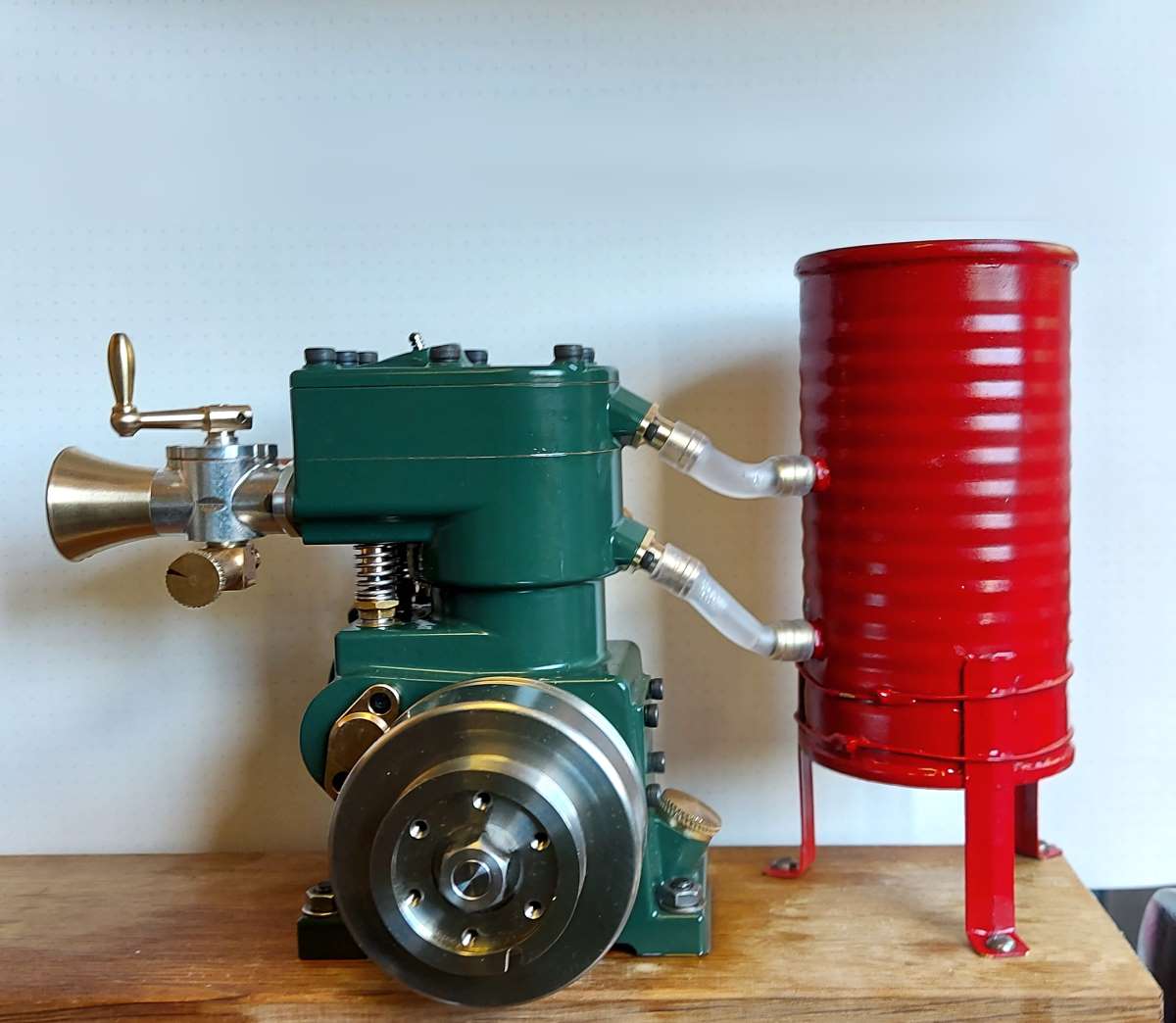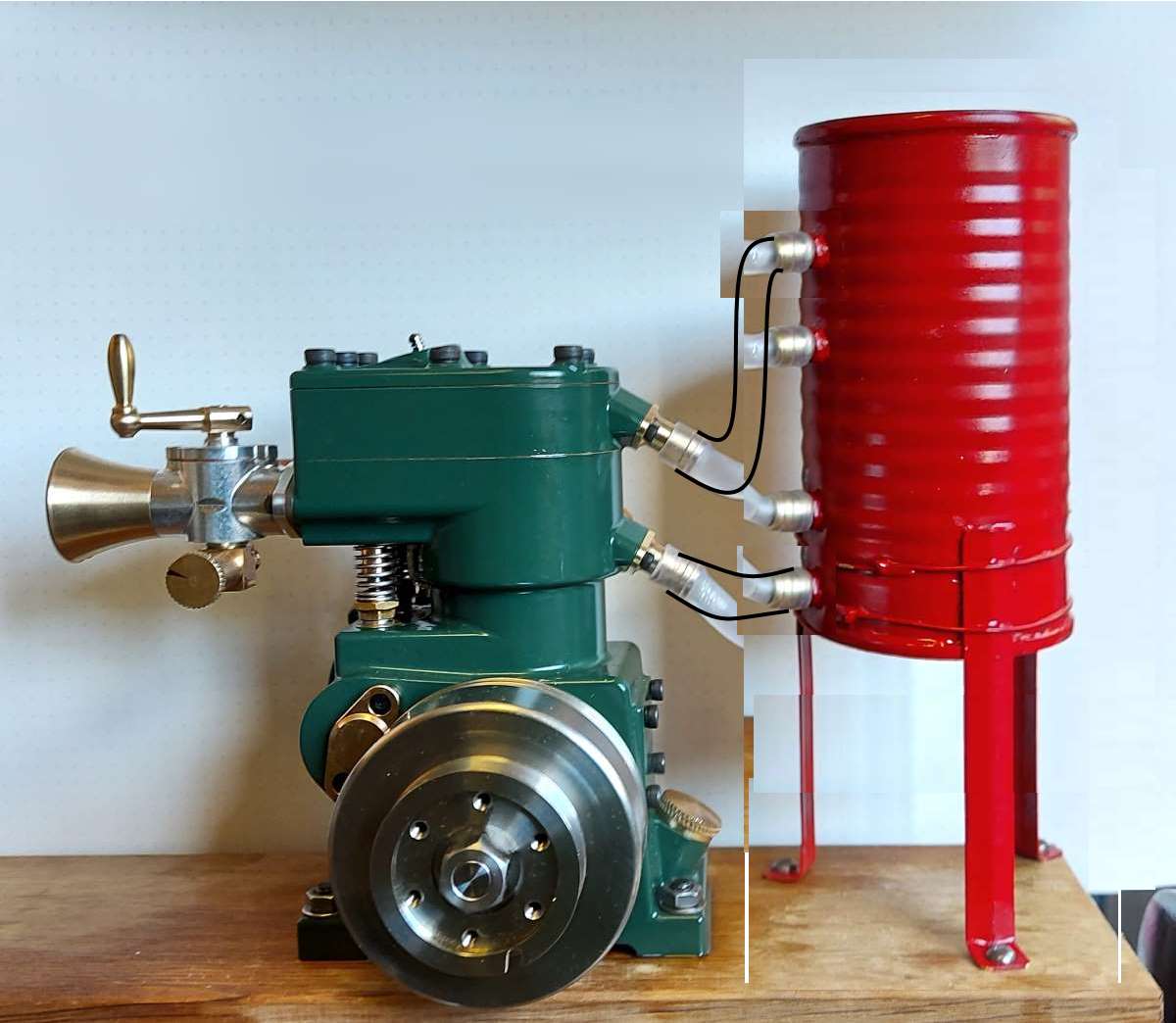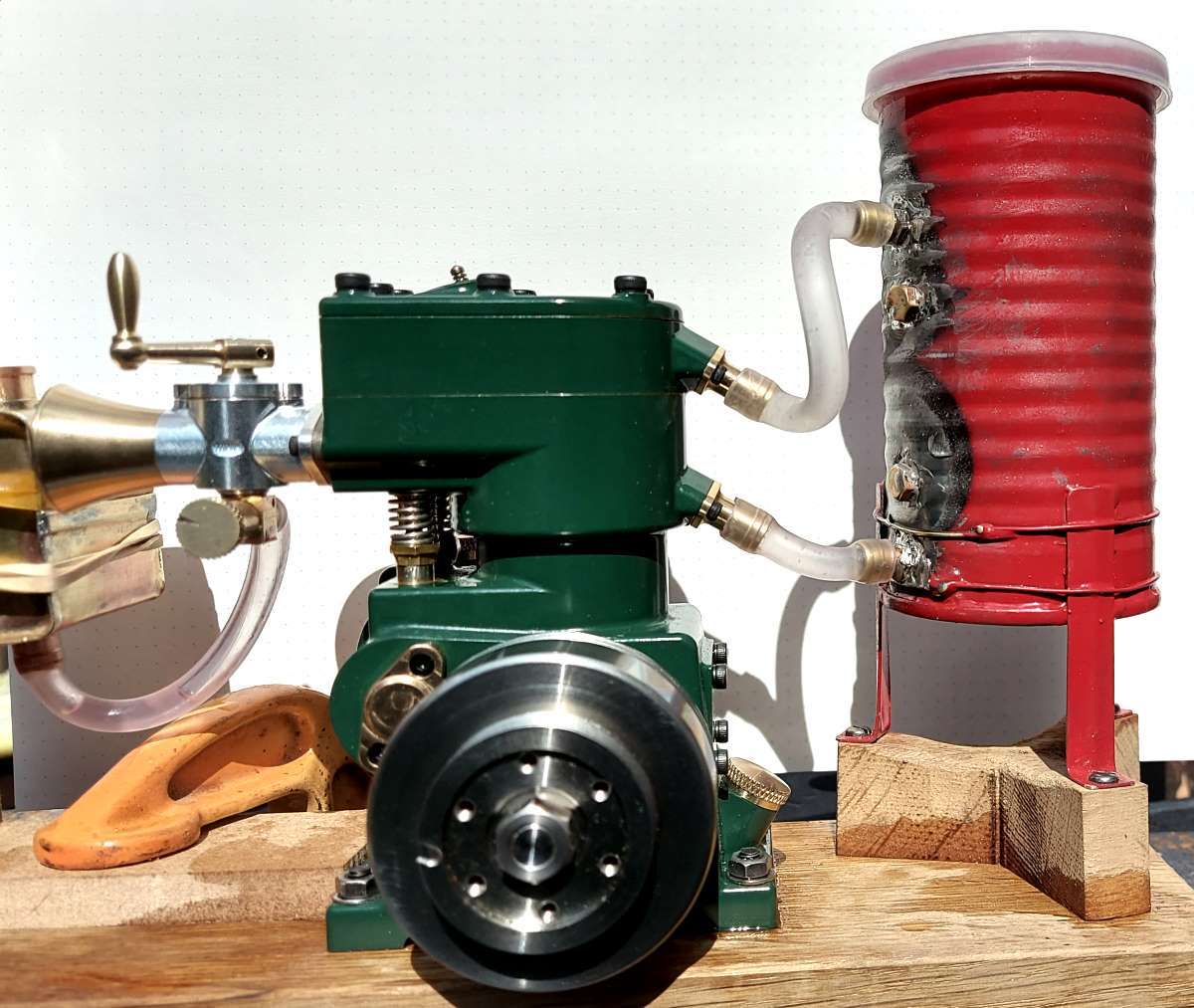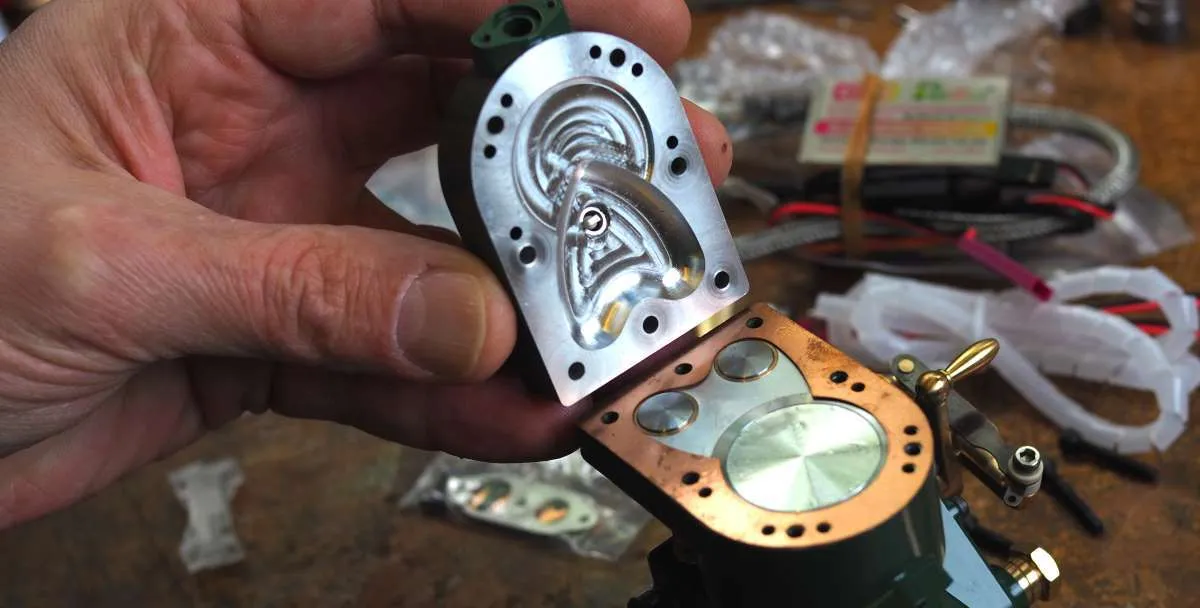You are using an out of date browser. It may not display this or other websites correctly.
You should upgrade or use an alternative browser.
You should upgrade or use an alternative browser.
New Tiny ETW WHIPPET Engine?
- Thread starter Richard-Vanderpol
- Start date

Help Support Home Model Engine Machinist Forum:
This site may earn a commission from merchant affiliate
links, including eBay, Amazon, and others.
Richard-Vanderpol
Well-Known Member
glue-itcom
Well-Known Member
- Joined
- Apr 10, 2013
- Messages
- 216
- Reaction score
- 300
I've just received one of these in the post to review, just unpacking it and having a first look:
I will add more to the Enjomor Whippet as I go.
I will add more to the Enjomor Whippet as I go.
glue-itcom
Well-Known Member
- Joined
- Apr 10, 2013
- Messages
- 216
- Reaction score
- 300
There are a lot of lovely parts with this engine:
glue-itcom
Well-Known Member
- Joined
- Apr 10, 2013
- Messages
- 216
- Reaction score
- 300
glue-itcom
Well-Known Member
- Joined
- Apr 10, 2013
- Messages
- 216
- Reaction score
- 300

$59.99
Sunnytech Hot Air Stirling Engine Motor Model Educational Toy Electricity Generator Colorful LED (SC001)
stirlingtechonline

$649.00
$699.00
FoxAlien Masuter Pro CNC Router Machine, Upgraded 3-Axis Engraving All-Metal Milling Machine for Wood Acrylic MDF Nylon Carving Cutting
FoxAlien Official

$15.99 ($0.05 / Count)
$18.99 ($0.06 / Count)
HongWay 300pcs 2 Inches Sanding Discs Pad Kit for Drill Sanding Grinder Rotary Tools with Backer Plate Shank and Soft Foam Buffering Pad, Sandpapers Includes 60-3000 Grit
HongWay US

$39.99
$49.99
Sunnytech Low Temperature Stirling Engine Motor Steam Heat Education Model Toy Kit For mechanical skills (LT001)
stirlingtechonline

$104.99
Sunnytech Hot Air Stirling Engine Motor Steam Heat Education Model Toy Kit M16-CF
stirlingtechonline

$156.90 ($1.40 / oz)
Replacement Combustion Chamber Kit, Burnham V8 and V8H, 1-6 Sec, 108136-01, 1129
Lynn Manufacturing

$188.98
TM NEXDYNAMI RE41157 Water Pump Compatible With/Replacement For/John Deere 6200 7400 6300 6600 6500 6400 7220 7600 7200 RE41157
VIVID MARKET CORPORATION

$99.99
$109.99
AmTech300 - Boiler Treatment Professional Strength (Rust Inhibitor For Outdoor Wood Boilers)
Alternative Heating & Supplies

$403.09
DM14 Engine Build Kit, Metal Engine Build Model Great Metal Material for Engineer for Factory
Easoger Official

$190.00
$254.99
Genmitsu CNC 3018-PRO Router Kit GRBL Control 3 Axis Plastic Acrylic PCB PVC Wood Carving Milling Engraving Machine, XYZ Working Area 300x180x45mm
SainSmart Official

$94.99
$109.99
AHS Woodmaster 4400 Maintenance Kit for Outdoor Wood Boiler Treatment
Alternative Heating & Supplies

$45.99
Sunnytech Mini Hot Air Stirling Engine Motor Model Educational Toy Kits Electricity HA001
stirlingtechonline

$39.73
$45.00
Key Contemporary Buildings: Plans, Sections and Elevations (Key Architecture Series)
Karen Tolliver
glue-itcom
Well-Known Member
- Joined
- Apr 10, 2013
- Messages
- 216
- Reaction score
- 300
glue-itcom
Well-Known Member
- Joined
- Apr 10, 2013
- Messages
- 216
- Reaction score
- 300
Just got this Enjomor Whippet engine running on glow fuel
All credit to the E.T. Westbury for a superb design.
I will now sort out the design of the stand for the fuel tank and then look at running this on gasoline. I think it will then run even slower and very controlled.
All credit to the E.T. Westbury for a superb design.
I will now sort out the design of the stand for the fuel tank and then look at running this on gasoline. I think it will then run even slower and very controlled.
I like small engines, all small engines, no matter how simple, and I don't care where and by whom.....
But, This is the forum " Home model engine "
If you want to advertise : Please consult the admin !
But, This is the forum " Home model engine "
If you want to advertise : Please consult the admin !
glue-itcom
Well-Known Member
- Joined
- Apr 10, 2013
- Messages
- 216
- Reaction score
- 300
Correct, I was given the engine by Enjomor/StirlingKit. I have then homemade the parts around it.I like small engines, all small engines, no matter how simple, and I don't care where and by whom.....
But, This is the forum " Home model engine "
If you want to advertise : Please consult the admin !
I'm very happy though if it is removed from here.
Mechanicboy
Well-Known Member
- Joined
- Jul 10, 2013
- Messages
- 959
- Reaction score
- 349
Clue-itcom,.. See this 




glue-itcom
Well-Known Member
- Joined
- Apr 10, 2013
- Messages
- 216
- Reaction score
- 300
Thanks, this design is not helped by the top outlet being angled down - I will have a go at making another coolant tank and getting the pipes running correctly. The original engine as designed by ET Westbury (Hemingway Kits) has a coolant outlet from the top of the head and avoids any possible air locks. Hemingway Kits
Mechanicboy
Well-Known Member
- Joined
- Jul 10, 2013
- Messages
- 959
- Reaction score
- 349
this design is not helped by the top outlet being angled down -
No problem with a bit angled outled pipe from engine, its length of the hose from the top of the angled pipe on the engine to the top of the pipe on the cooland barrel/radiator must be long enough to keep coolant circulating.
glue-itcom
Well-Known Member
- Joined
- Apr 10, 2013
- Messages
- 216
- Reaction score
- 300
Thanks, I will drop the lower point on the tank, then raise it further on the stand and increase the upper point. That should give a longer upper pipe run.No problem with a bit angled outled pipe from engine, its length of the hose from the top of the angled pipe on the engine to the top of the pipe on the cooland barrel/radiator must be long enough to keep coolant circulating.
glue-itcom
Well-Known Member
- Joined
- Apr 10, 2013
- Messages
- 216
- Reaction score
- 300
Using the latest CAD I think then I can go from this:

to this


to this

Mechanicboy
Well-Known Member
- Joined
- Jul 10, 2013
- Messages
- 959
- Reaction score
- 349
Yes, a bit higher to top to increase stream of hot coolant from the engine. Water is heated, it gains kinetic energy from the heating source and becomes excited. As a result, the water becomes less dense, expands, and thus rises. The warmer fluid will "float" above the cooler fluid, and the cooler fluid will "sink" below the warmer fluid. This phenomenon of natural convection is known by the saying: "heat rises". Convection moves the heated liquid upwards in the system as it is simultaneously replaced by cooler liquid returning by gravity. A good thermosiphon has very little hydraulic resistance so that liquid can flow easily under the relatively low pressure produced by natural convection.
glue-itcom
Well-Known Member
- Joined
- Apr 10, 2013
- Messages
- 216
- Reaction score
- 300

A bit of a mess, but I wanted to modify the connection points and test it out. The result is the water now gets quite hot and you can feel the gradient top to bottom of the tank. Cool and thanks to @Mechanicboy
You can feel the temperature difference on the upper and lower plastic tubes, so there is water thermally cycling around the system.
The plastic lid has a ~8mm diameter hole in it, there just to stop water going everywhere.
Mechanicboy
Well-Known Member
- Joined
- Jul 10, 2013
- Messages
- 959
- Reaction score
- 349
Glue-Itcom,.. Here is my gas engine with thermosiphon cooling 
glue-itcom
Well-Known Member
- Joined
- Apr 10, 2013
- Messages
- 216
- Reaction score
- 300
Glue-Itcom,.. Here is my gas engine with thermosiphon cooling
That runs very well. Is this running on gas or petrol?
lee webster
Well-Known Member
The angle of the bottom hose looks OK, but the top hose just doesn't look right. Should it run "downhill"? If I had the engine, and knew what I was doing, I would machine off the outlet from the head and somehow make a new outlet that pointed up to the top pipe in the hopper. My car has a thermosyphon system and they can work OK.
Similar threads
- Replies
- 0
- Views
- 157





















































